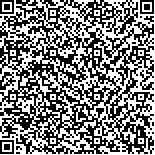下载中心
优秀审稿专家
优秀论文
相关链接
摘要

相比于正交T-Snake算法,传统Balloon Snake算法不受格网约束,能够更加精确提取高分辨率遥感影像上水体,然而尚不能解决河中岛引起的拓扑冲突问题。由此,本文提出了一种改进Balloon Snake算法(T-Balloon Snake),设计了目标内部由于空洞引起的拓扑冲突检测与处理机制。算法首先在目标水体内部手动设置一个初始轮廓,在曲线每次膨胀前对曲线进行自相交检测,若存在拓扑冲突则对曲线进行分裂与合并处理,最终直至迭代停止。实验选取了三类湖泊与河流高分影像,实现了复杂遥感影像水体矢量边界的一次性精确提取。实验结果表明,该方法可直接有效提取水体中深凹以及岛状边界,在提取结果正确性和完整性上都优于传统Balloon Snake算法。
关键词:
遥感影像 河中岛 边界提取 改进Balloon Snake 拓扑冲突The traditional balloon snake model is free from the constraints of orthogonal grids compared with the topology-adaptive snake model and thus extracts water boundaries from high-resolution remote sensing images with more accuracy. However, this method cannot detect and handle topological conflict caused by islands in water. To solve this problem, an improved topology-adaptive balloon snake model, which is based on the traditional balloon snake model, is proposed. First, an original contour inside the target water body is manually set. Then, self-intersection detection is conducted each time prior to contour expansion. If holes cause topological conflict, curve deformation will be performed until the iteration stops. The data selected for this experiment were obtained from the GF-1 observing satellite images of three kinds of lakes and rivers, thus realizing the one-off accurate extraction of complex water from remote sensing images. Based on the results of our experiment, the proposed method can efficiently, correctly, and completely extract the boundaries of deeply concave regions and islands.

